Modern shower heads come in many different types and functions. But there’s no better way to get yourself pampered than with low-flow shower heads, the cost-efficient shower heads that conserve water without sacrificing your shower quality.
And it’s no wonder they’ve become so popular among thrifty homeowners. But have you ever wondered how does a low-flow shower head work?
They cut water usage either by dispersing air with water or jetting out a powerful spray via small openings. Either type reduces the amount of water used and thus lowers your water bill.
Let’s take a deeper look into the working principle of a low-flow shower head.
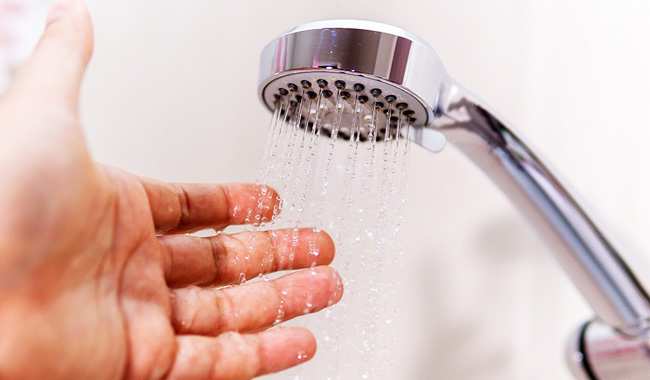
What Is a Low Flow Shower Head?
A water-saving or low-flow shower head is an efficient shower head variant that uses less water than standard models by limiting the volume of water delivered per minute.
In fact, it can reduce the amount of water going through the pipe by 50% or more.
This can be beneficial when you have limited water available or want to conserve it for other uses. Or, in other words, you want to cut down on your water bills.
For example, if you’re using your shower as part of your morning routine but only have ten minutes before work starts, you may not want to waste all the water in one big gush.
Or maybe your house has low indoor plumbing, such as a well or an old cistern system. In that case, you might consider installing a low-flow shower head to take advantage of the water savings it can provide.
How Does a Low Flow Shower Head Work?
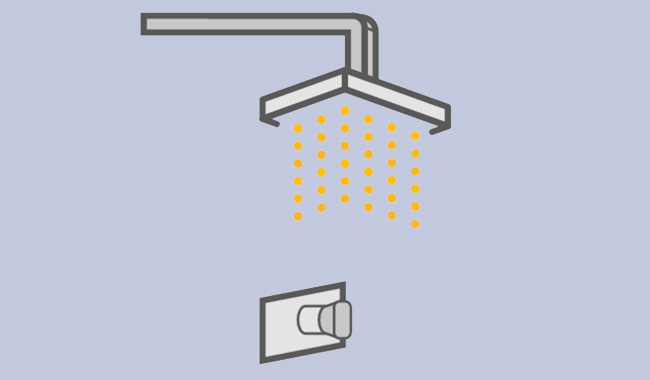
Low flow shower heads work by restricting how much water flows through them at once. They do so in two ways: by dispersing air mixed with water or jetting out a powerful spray through smaller openings.
Rather than pumping a large amount of water into the shower, they mark down the flow to reduce the amount of water you use.
In addition to reducing water flow, low-flow shower heads lower the energy requirements for hot showers.
Recommended reading: Can a Shower Head Affect Water Temperature?
What Is the Flow Rate of a Low Flow Shower Head?
Modern shower heads typically use 2.5 gallons of water per minute (GPM). If any water-saving shower head uses a rate less than this, it represents a good step forward.
A good low-flow shower head will use anywhere between 1.25 and 1.5 GPM, cutting your water usage down in half.
Types of Low Flow Shower Head
As we’ve seen, low-flow shower heads come in two types: those that mix air with water and those that use small holes to jet out water.
These types are distinguished by how they work and the resulting shower experience. Let’s learn more about each.
Aerating Shower Heads
Air-injected shower heads, also known as aerating shower heads, are the most common type of low-flow shower heads.
As the name suggests, they mix air with water to reduce the water volume. While the water flow is reduced, the water pressure is still strong enough to give you a pleasant showering experience.
If your water pressure is good, an aerating shower head is a great option. This is because the air-injected water can cause a decrease in water pressure, causing a gentle, convenient stream rather than a powerful one.
However, the flow rate may become too weak to shower-worthy if you have low-pressure water in your house.
NB. To know more details about shower head air-injection technology, read this.
Non-Aerating Shower Heads
Non-Aerating or jet shower heads, on the other hand, have small holes that help reduce water consumption. They work by pressing water through these tiny holes at high pressure, resulting in a powerful yet focused stream.
Because they don’t mix air with water, non-aerating shower heads maintain a strong water pressure that can be perfect for low water pressure homes. They can even keep up the consistency when you are low on water.
You can also adjust the spray intensity on most non-aerating models. But water savings is not the only advantage of a non-aerating shower head. It can also add substantial pressure to showers that barely had any before.
However, because the holes are small, they can get clogged easily with minerals in hard water. This can impact the shower head’s performance and cause a drop in water pressure over time.
Ona side note: To keep your shower head clogged-free, read our shower head cleaning guide here.
What Is Considered As A Low Flow Shower Head?
The definition of a low-flow showerhead can vary depending on who you ask. The U.S. Environmental Protection Agency (EPA) defines it as any shower head that uses less than 2.5 gallons of water per minute.
And to be on the list of WaterSense labeled shower heads, it must not use more than 2 GPM.
The California Energy Commission takes things a step further by defining it as any shower head that uses no more than 1.5 gallons of water per minute.
To put this into perspective, the average shower head uses about 2.5 gallons of water per minute. This means a low-flow shower head uses much less than the average shower head, typically between 1.25 and 2 GPM.
How Do I Know If I Have a Low Flow Shower Head?
If your shower head is more than 20 years old, chances are it’s not a low-flow model. In the mid-’90s, the U.S. government began regulating the maximum flow rate of shower heads to 2.5 GPM.
So, if your shower head was manufactured after that, it’s likely a low-flow shower head.
You can also check the GPM rating of your shower head. This will be listed on the packaging or in the product manual. If you can’t find this information, you can measure the flow rate yourself.
Simply place a bucket under your shower head and turn on the water. Watch how long it takes to fill the bucket with one gallon of water. This will give you your shower head’s flow rate in gallons per minute.
Do Low-Flow Shower Heads Have Good Water Pressure?
One of people’s biggest concerns about low-flow shower heads is the water pressure. But there’s no need to worry. While it’s true that low-flow shower heads use less water, they still provide plenty of water pressure for a great shower.
In fact, many people say they don’t even notice a difference in water pressure when they switch to a low-flow shower head.
This is because low-flow shower heads are designed to maintain water pressure while using less water by briefly interrupting the flow several times a second.
Pros and Cons of Water Saving (Low Flow) Shower Head
Now that you know how low-flow shower heads work and what questions they raise let’s consider some of their pros and cons.
Pros
- Reduced water usage
- Reduced energy consumption
- Increased water pressure with less water
- Can save you money on your water bill
- Environmentally friendly
- Available in a variety of styles and designs
Cons
- Non-Aerating models may require more frequent descaling
- Due to their flow rate requirements, water heaters may not be much efficient
How Much Water Can a Low Flow Shower Head Save?
The amount of water you can save with a low-flow shower head will vary depending on the model you choose and how often you shower.
According to the EPA, if everyone in the U.S. switched to WaterSense labeled shower heads, we could save more than 260 billion gallons of water and $2 billion in water and energy bills annually.
To put this into perspective, the average family of four can save more than 11,000 gallons of water and $60 on their water bill each year by installing a low-flow showerhead.
Are Low-Flow Shower Heads Good?
The short answer is yes. Low-flow shower heads are good for you, your wallet, and the environment. Not only do they save water, but they can also save you money on your water bill.
And since they use less water, they also help to conserve energy. Compared to regular shower heads a low-flow one is undoubtedly your go-to option if you seek a renter apartment guide to conserve water and save money.
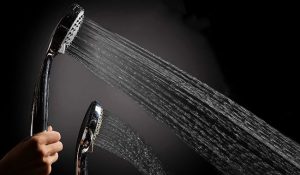
HO2ME High Pressure Handheld Shower Head Review
The HO2ME shower head is a product of the G-Promise brand. This shower head has a beautiful design that catches the eye of any potential
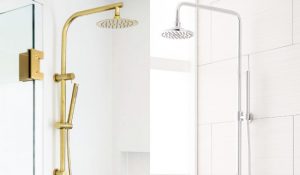
Brass vs. Stainless Steel Shower Head: Which One is Better?
The main differences between Brass and Stainless Steel are- Stainless steel (SS) shower heads are more elegant and modern than brass. On the other hand, brass

Kraus vs Elkay Kitchen Sinks | Which Brand is Best?
Deciding whether to get kitchen sinks from a brand that offers numerous types of sinks, or from a brand that focuses more on the variation

When is the Best Time to Buy a Lawn Mower (for Maximum Savings)
The price of an individual product changes according to the demand of the product at different times of the year. This is why you might buy
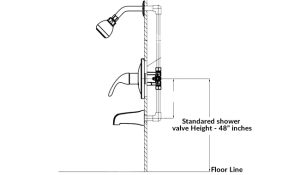
Standard Shower Valve Height | Expert Guides With Picture
A soothing shower experience is possible if you have appropriately set all the shower materials and regulators. Just imagine a day of simmering summer and

The 13 Best Moen Kitchen Faucets of 2023- The Ultimate List
Choosing the best Moen kitchen faucet was tough for us. The brand had awesome faucets, and we were confused about which one to grab for



